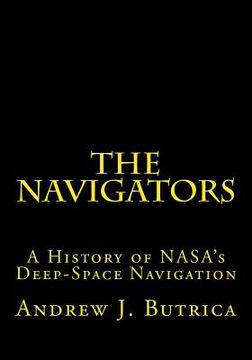Reseña del libro "The Navigators: A History of NASA's Deep-Space Navigation (en Inglés)"
This is the story behind NASA's successful exploration of the solar system. For a half century, NASA has sent one probe after another into space, achieving scientific and technological successes along the way and adding to humanity's knowledge of the solar system. NASA has reaped these great rewards thanks to a small investment in deep-space navigation. With rare exceptions, navigation's great achievements-and scientific accomplishments-have gone unobserved. The failures of the Mars Climate Orbiter and Mars Polar Lander shed navigation (wrongly) in a negative light. Yet, the indispensable role of navigators behind NASA's many successes over the past half century has not come to light-until now.The institutional home of deep-space navigation is the NASA's Jet Propulsion Laboratory. JPL navigation originated long before it became part of NASA, when the lab developed and tested missiles for the nation's military space effort. From the start, deep-space navigation was an endeavor built on science and mathematics and dependent on the Deep Space Network for tracking spacecraft and on digital computers and software for processing data.Navigation is multidisciplinary. It involves astronomy and radio astronomy, geodesy and geophysics, cartography and meteorology, ionospheric physics and radio science. Navigators interact with a panoply of institutions, whether the Bureau International de l'Heure, the International Polar Motion Service, the International Union of Geodesy and Geophysics, and the International Astronomical Union. JPL navigation started as a consumer of Naval Observatory data, practices, and ephemerides, but in the 1970s became the source of ephemerides, constants, models, and ephemerides for the world's almanac offices.Navigators have been project scientists on many NASA missions, performing experiments in celestial mechanics and gravitational fields, undertaking radio occultations, and testing Einstein's General Theory of Relativity. They also have made a number of memorable scientific discoveries: mascons on the Moon and Mars, volcanism on Io, and over a dozen satellites of the outer planets.The nature of deep-space navigation began to change with the introduction of optical navigation, which uses a probes science camera and telemetry to determine its position relative to a planet, moon, or asteroid. Deep-space navigation began-and remains-an activity carried out entirely on Earth. Radio signals from the Deep Space Network constituted the only information processed. Optical navigation began to move some of the process-and equipment-to spacecraft. At first, image processing was a labor-intensive and computer-intensive effort. Software improvements and advances in spacecraft computers paved the way for autonomous navigation, which transferred many basic navigation processes to the onboard computer: estimating trajectories, planning and executing imaging, and analyzing pictures. The most recent evolutionary stage has been the merger of this autonomous software with spacecraft guidance and control functions.

